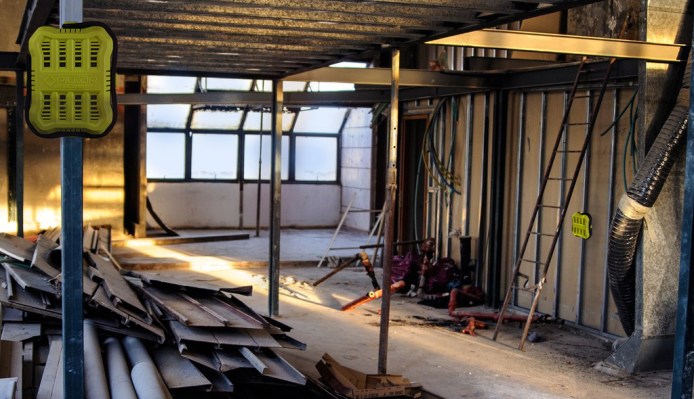As construction projects in the U.S. began skyrocketing over the last few years, so have the number of accidents and deaths on job sites.
A recent New York Times editorial brought the problem of job site safety into sharp relief noting that the city had seen 31 construction-related fatalities in a two-year period.
Meanwhile, in Boston, a spate of construction-related fires showed that its not just laborers, but projects themselves are at risk from poor site management.
Well, Pillar Technologies has raised $2.75 million in seed funding to bring new monitoring tools to the construction world and reduce risks on the job.
The New York-based company, a former graduate of TechCrunch’s CES Hardware Battlefield 2017 is the latest tech startup working to bring technology to the construction business — one of the industries most resistant to the kind of on-the-job improvements that technology can provide through better monitoring and management tools.
General contractors and insurers are using Pillar data management to monitor sites and predict when failures might occur. The technology is also something of an early warning system for things like water leaks, freezes, fire and mold outbreaks.
Ever since the U.S. managed to climb out of the giant economic hole it created for itself (and the world) with the real estate bust of 2008, construction in the country has been on a tear.
A Forbes article from 2016 noted that roughly $100 billion in new construction starts were planned or implemented in 2015 in just five U.S. cities.
Pillar is already working in eight states with construction companies on 15 job sites, according to the company’s chief executive and co-founder Alex Schwarzkopf.
Deployments of Pillar’s technology typically last from six to eighteen months in the period between when a building is wrapped with an envelope and when a project is actually completed in what’s called the “fit-out” period.
“The technology is really designed to monitor the environment,” Schwarzkopf says. “It’s for the health of the work force [and] the health of the project.”
While it can’t ensure that workers take the required safety precautions on job sites, it can measure the environment on those sites and let construction workers know when environmental conditions are unsafe.
That alone is a big plus for contractors and laborers, Schwarzkopf said. Measuring things like air particulates and chemicals can let workers know when they’re being exposed to potentially harmful levels of the stuff and help ensure that they take proper precautions.
The company’s current batch of sensor-packed boxes are being used to monitor things like temperature, pressure, humidity, smoke and dust, but it’s not hard to imagine the company eventually installing low-cost cameras to provide monitoring for on-the-job safety that could avoid accidents like the kind that were responsible for so many deaths in New York.
It’d also be a boon to the insurers whose job it is to worry about construction site safety and project management — and whose venture arms are providing some of the financing for Pillar.
Funding for the company’s latest round came from XL Innovate, Hyperplane VC, and Techstars Ventures, according to a statement from the company. Pillar says it will use the money to expand its workforce and scale manufacturing.
As a result of the financing, Martha Notaras, a partner at XL Innovate — the investment arm of the global insurance firm XL Catlin — will take a seat on the company’s board of directors.
“By bringing industrial-grade sensors to construction sites, Pillar can offer more accurate risk management to general contractors and potential policy optimization to insurance providers to better protect sites from damage,” said Martha Notaras, in a statement. “Gathering and analyzing key environmental data can help predict and prevent major issues while allowing insurers and their clients to reduce losses over the long run.”
